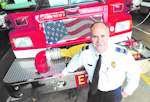The concept of smart cities has become a worldwide discussion and trend. This is a direct result of broadband connectivity and the Internet of Things (IoTs). The IoTs refers to all the devices that can be connected via the internet or an IP network.
Wikipedia defines a smart city as, “An urban area that uses different types of electronic data collection sensors to supply information that is used to manage assets and resources efficiently. This includes data collected from citizens, devices and assets that is processed and analyzed to monitor and manage building systems, traffic and transportation systems, power plants, water supply networks, waste management, law enforcement, information systems, schools, libraries, hospitals, and other community services.”
IoT Today (iot-today.com) identified the top 5 smart cities in the world as Singapore, London, Barcelona, San Francisco and Oslo based on their use of broadband connectivity and integration of various data systems for the purpose of analyzing and increasing operational efficiencies. The scope of the smart city concept will impact city employees, buildings/infrastructure, technology, citizen engagement and community expectations.
Fire service impact
For the fire service, the smart city trend has some interesting impacts, opportunities and challenges. The implementation of the First Responder Network Authority (FirstNet) also adds to the opportunities of reliable broadband connectivity, especially broadband that provides both priority and preemption for firefighters during large-scale events, incidents and natural disasters.
The smart city concept offers the possibility of more effective fire detection, notification and extinguishment systems. As fires are detected, systems may make faster notifications to dispatch centers with more information, such as areas with smoke, identification of specific particulates, presence of hazmat, temperatures and video from impacted areas. The addition of x, y and z (floor level) enhanced location services will offer quicker and more accurate location of 9-1-1 callers as well as firefighters and other responders operating within a building. This will be especially important in high-rise buildings and will greatly enhance accountability and locating firefighters in a mayday situation, a phenomenal accomplishment in itself.
A Department of Homeland Security (DHS) Science and Technology Directorate (S&T) bulletin dated June 15, 2018, stated that the S&T directorate “… is conducting research and development work that will focus on in-building sensors, unmanned aerial systems and on/off-body mobile SmartHubs, each of which will combine communications and sensors to increase responder situational awareness, building security and enhance mission-critical operations.”
Firefighters may now be able to receive much of the information from the 9-1-1 caller through Next Generation 9-1-1 systems directly. Imagine as a firefighter that you receive over your smartphone the computer-aided dispatch (CAD) data that includes address, location of the fire, environmental conditions, location of trapped people and video. Then as firefighters arrive, their location may be monitored by incident command (IC) staff as they make their way to those in need.
This same response information would be available via smart tablets. In addition, the data would include response route, location of all emergency responder units, building floor plans, hazmat data, suppression system connections and the location of building occupants with special needs. This automation could also utilize traffic management systems and collision avoidance technology to prevent accidents between emergency response and civilian vehicles. Through the implementation of connected vehicle technology (see previous Firehouse article at firehouse.com/12286919), all vehicles in a given area may be slowed or rerouted to avoid the incident all together and prevent secondary accidents.
Smart city technology will also include broadband for public safety communications over FirstNet for critical calls, data, photos, video streaming and more. Current land mobile radio (LMR) systems will interface with FirstNet and enlarge the communications footprint to be inclusive of any internet-enabled device. This is now transitioning into radio over LTE where enhanced push-to-talk technologies operate similar to and indistinguishable from traditional portable radios, and are capable of communicating with LMR users. Eventually, FirstNet’s buildout will realize the nationwide public safety interoperable communications that was recommended from the 9/11 Commission and legislated in 2012.
EMS will also benefit from this smart city technology as patient wearable devices may detect an oncoming heart attack, stroke or other life-threatening condition and activate the EMS system by initiating a medic/ambulance, informing medical centers of an incoming priority patient with immediate monitoring of patient biometrics and access to online medical records. This will be particularly important for rural EMS care and reemphasizes the build out of FirstNet into rural areas of the country. Ambulance drones may also be automatically dispatched for patient transport.
Wearable technology (see firehouse.com/21000640) will also be interfaced with incident commander (IC) tracking systems to monitor health biometrics (pulse, respirations, body temperature, SCBA duration, environmental conditions, etc.). All of this information would be systematically monitored with built-in thresholds that would alert the IC should any individual or combination of this data indicate danger to the firefighter.
The smart city concept may also extend to fire facilities and fire apparatus. In addition to alerting fire stations, the automation may monitor fire apparatus readiness (fuel/water/SCBA air levels, brake condition, battery conditions for tools, and more), open fire station doors, shut off stoves/ovens and close doors upon departure. In addition, this smart city concept would include monitoring of fire stations for fire detection and intrusion for unauthorized entry with real-time video.
The use of drones are also part of the equation. Immediately upon dispatch of an incident response, a drone could be launched autonomously from a dispatch center or fire station and fly to the immediate location of the incident providing real-time situational awareness via secure video streaming to dispatch, responders and/or the IC. This provides invaluable information as to the magnitude of a fire, hazmat situation, explosion, flood, tornado and much more. Drones may also deliver critical medication to underserved areas or automatic external defibrillators to a cardiac arrest. This situational awareness information would help identify if additional resources are needed or to reduce speed and even release unnecessary responding units. Drones may be flying constantly as part of overall smart city monitoring for multiple purposes including public safety.
Tackling challenges
All of this comes with challenges for the fire service. Obviously a lot of this smart city automation comes with a cost and funding that is more often not available to the fire service. As the automation system and interface to various technologies grow the knowledge and personnel on the use and maintenance of the sensors, systems may not be readily available through either in-house personnel or outsourced services. As more of these services become available, they will require standard operating procedures (SOPs), training and exercising.
The overarching challenge will be the interdependency of these technologies, their reliability, cybersecurity and threats from external system attacks and hacking. The DHS S&T, National Institute of Standards and Technology (NIST) and other federal agencies are actively working on identifying and addressing the cybersecurity of the smart city technology by understanding the interdependent technologies and identifying potential threats and vulnerabilities. NIST and DHS S&T are jointly sponsoring the 2018 Global City Teams Challenge (GCTC) to address cybersecurity issues. The DHS Office of Cyber & Infrastructure Analysis (OCIA), which assesses the emerging risk to critical infrastructure, published “The Future of Smart Cities – Cyber Physical Infrastructure Risks” (https://tinyurl.com/future-smart-cities).
Opportunities ahead
At the end of the day, technological change is inevitable, and with it comes significant opportunities for the fire service. It is time to begin looking ahead to understand and prepare for these changes. As I have repeated in many of my previous articles, do not overlook the knowledge and talent of your younger and sometimes newest department members, as they often are more oriented to the newest technologies that are emerging. They are the early-adopters and can provide insights to our respective departments and leadership.

Charles Werner
CHARLES WERNER, who is a Firehouse contributing editor, is a 45-year veteran of public safety. He served with the Charlottesville, VA, Fire Department for 37 years, serving the past 10 years as chief. Following retirement, Werner served for two years as senior adviser and acting deputy state coordinator for the Virginia Department of Emergency Management. He has chaired: DHS SAFECOM Executive Committee; IAFC Technology Council; National Information Sharing Consortium; and DHS/White House Incident Management Information Sharing SubCommittee. Werner currently serves as the director of DroneResponders Public Safety Alliance, chair of the National Council on Public Safety UAS and chair of the Virginia Secure Commonwealth UAS Sub Panel.






